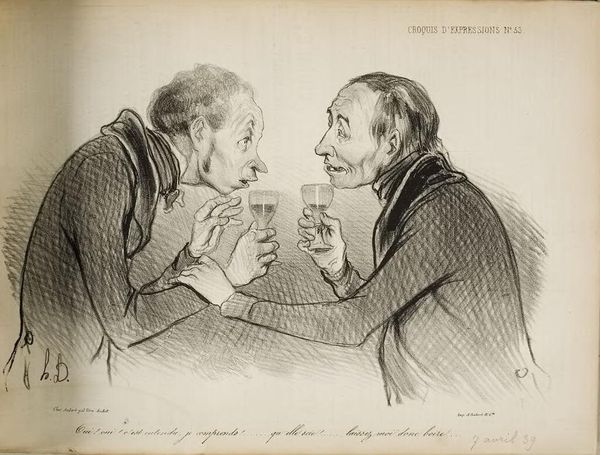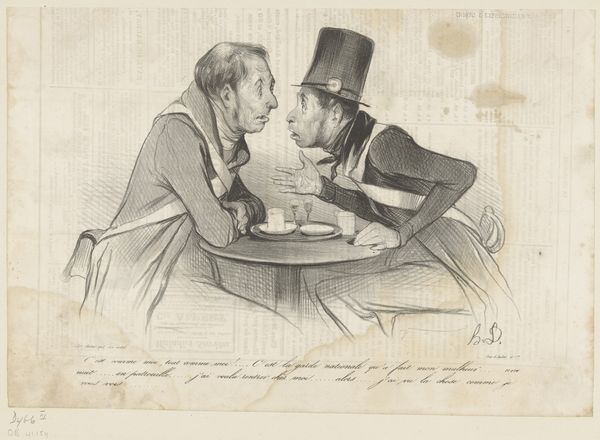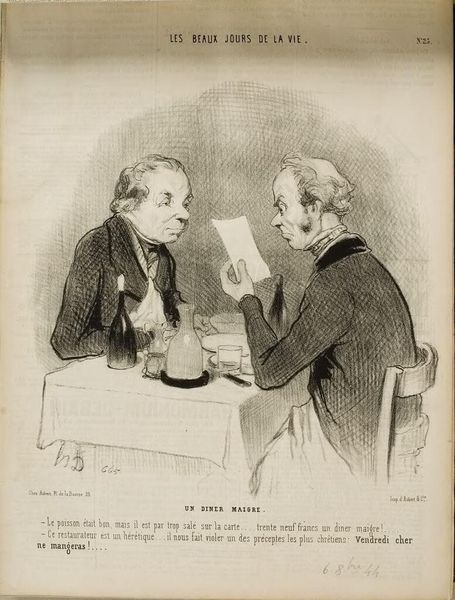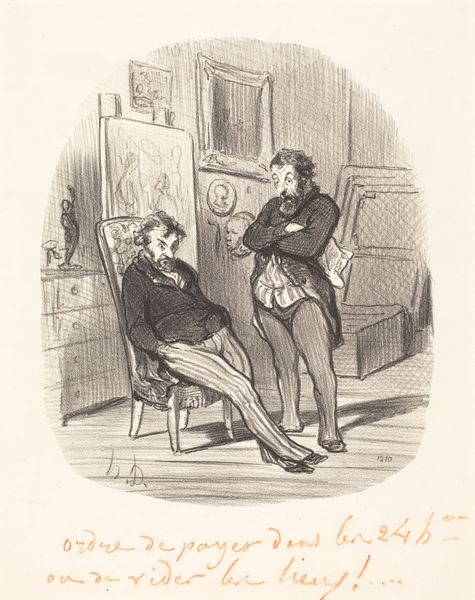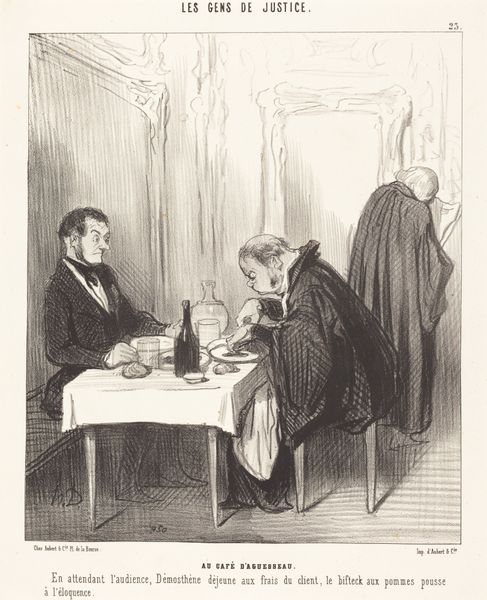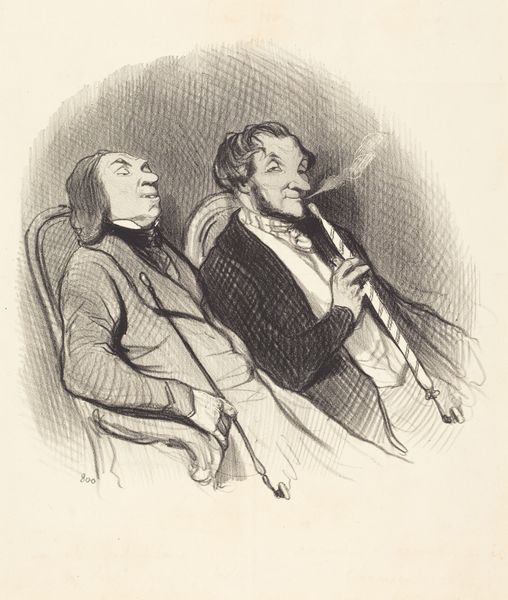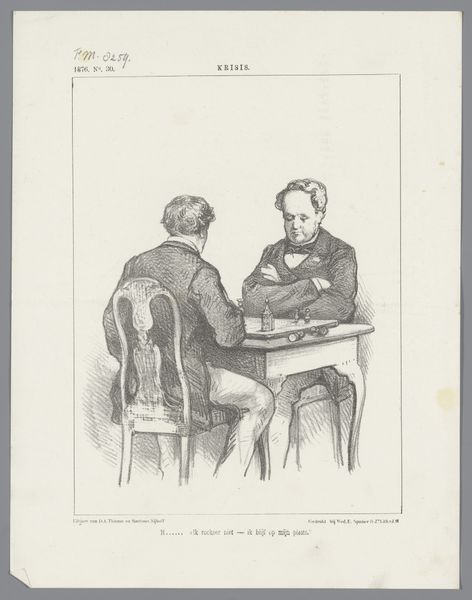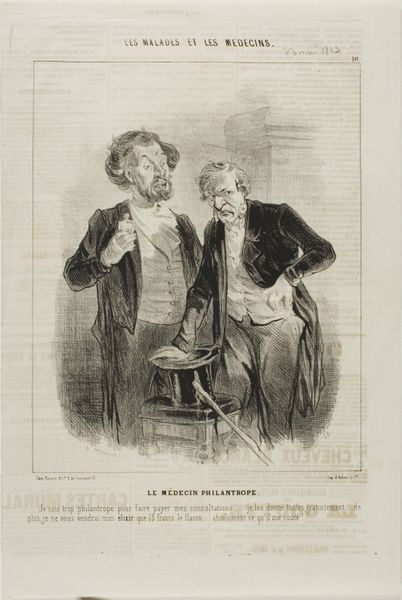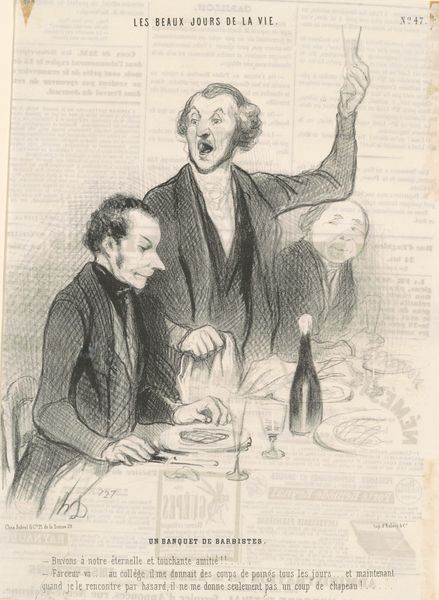
drawing, lithograph, print, pencil
#
portrait
#
pencil drawn
#
drawing
#
facial expression drawing
#
16_19th-century
#
lithograph
# print
#
caricature
#
pencil sketch
#
pencil drawing
#
pencil
#
portrait drawing
#
genre-painting
#
academic-art
#
realism
Copyright: National Gallery of Art: CC0 1.0
Editor: This lithograph by Honoré Daumier, titled *Un Diner maigre*, or "A Meagre Dinner," from 1844, strikes me as darkly humorous. What kind of cultural narrative is Daumier presenting here? Curator: Observe how the composition centers around the almost palpable tension. Note the pronounced facial expressions. Consider: what do you read in their eyes? Disappointment? Resignation? Perhaps even anger? This image taps into the archetype of social satire. Daumier often used imagery to critique societal inequalities and political corruption. The ‘meagre dinner’ isn’t merely about a lack of food, it is a representation of poverty, of unfulfilled promises. Editor: It’s fascinating how much Daumier conveys with simple lines. Are there other symbols besides the obvious lack of food that are significant here? Curator: The contrast between the men's attire and the apparent quality of the dinner service further accentuates the social commentary. Their respectable clothing signifies their attempt to maintain dignity. Yet, the 'meagre dinner' undermines this facade. Consider the paper he’s holding. What do you suppose that document signifies within this social drama? Perhaps it's a bill, or even an eviction notice. Editor: So, Daumier uses this almost theatrical scene to comment on broader societal issues, reflecting anxieties around class and status? Curator: Precisely. Daumier effectively employs universally understood symbols, layering meaning and inviting viewers to question what they are witnessing beyond the surface. It is a potent blend of humor and heartbreak. Editor: That’s given me a whole new appreciation for Daumier’s approach. It really does highlight the cultural weight that simple scenes can carry. Curator: Indeed. Visual symbols connect us to shared understandings, offering glimpses into cultural memory.
Comments
No comments
Be the first to comment and join the conversation on the ultimate creative platform.

